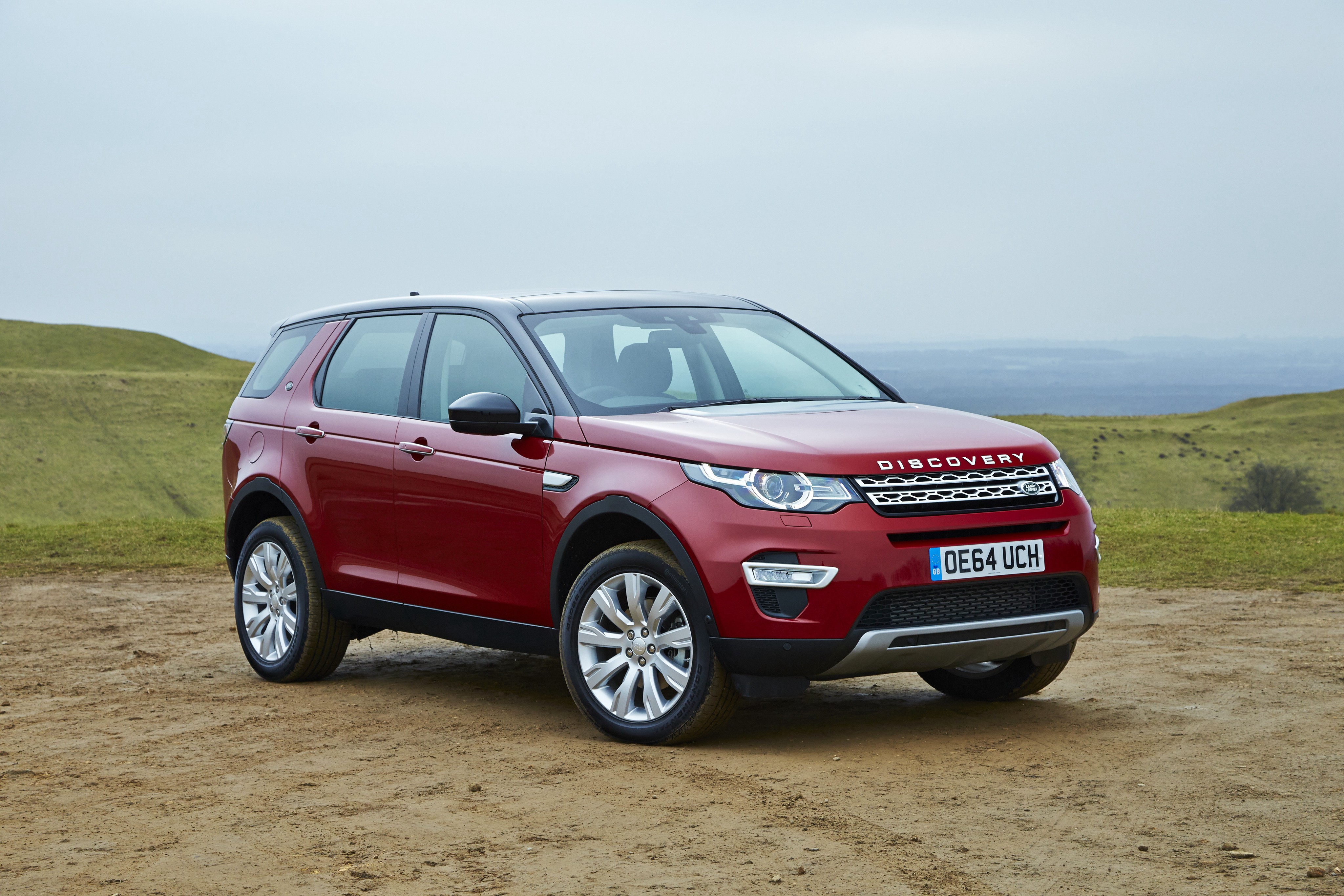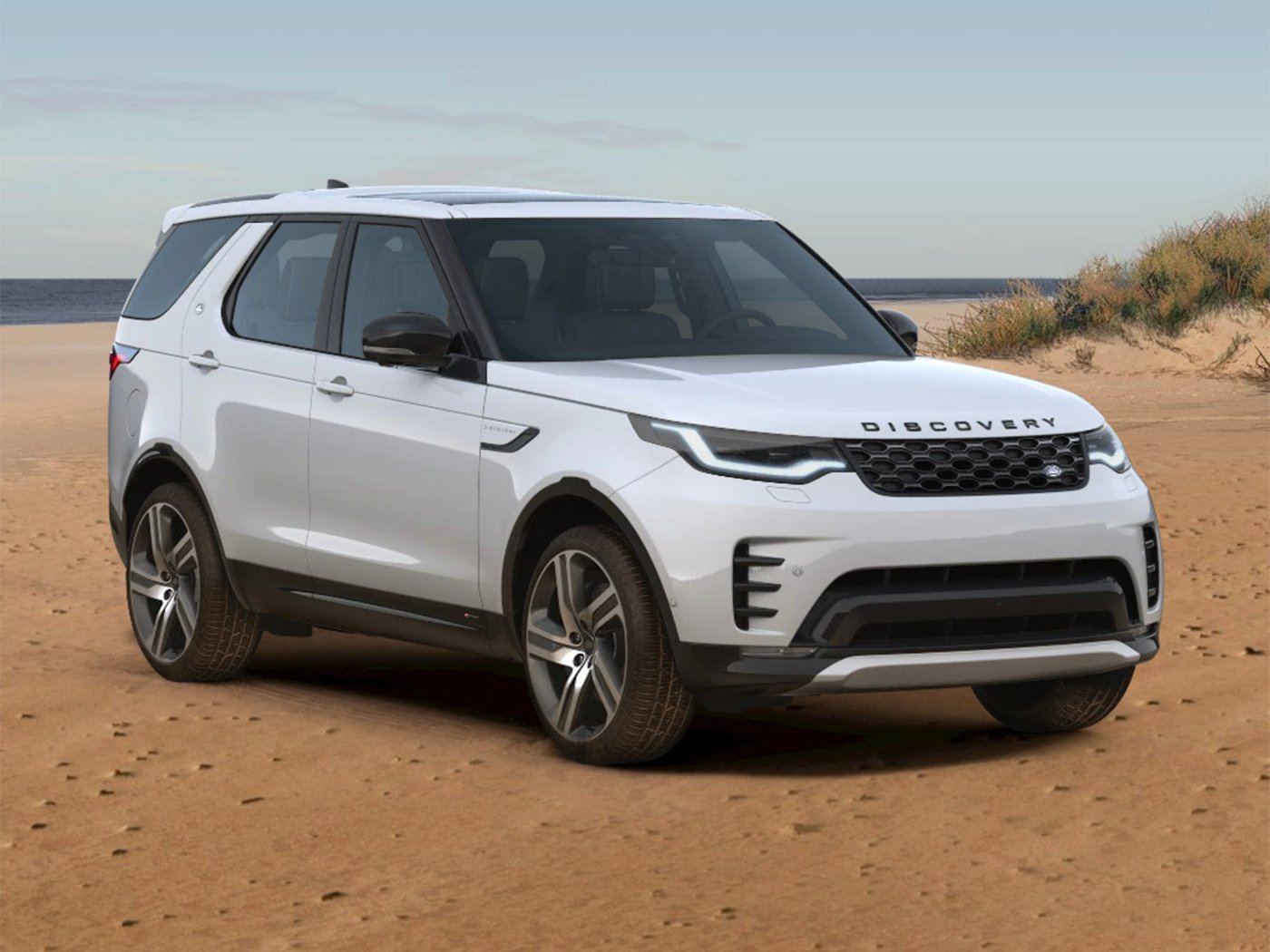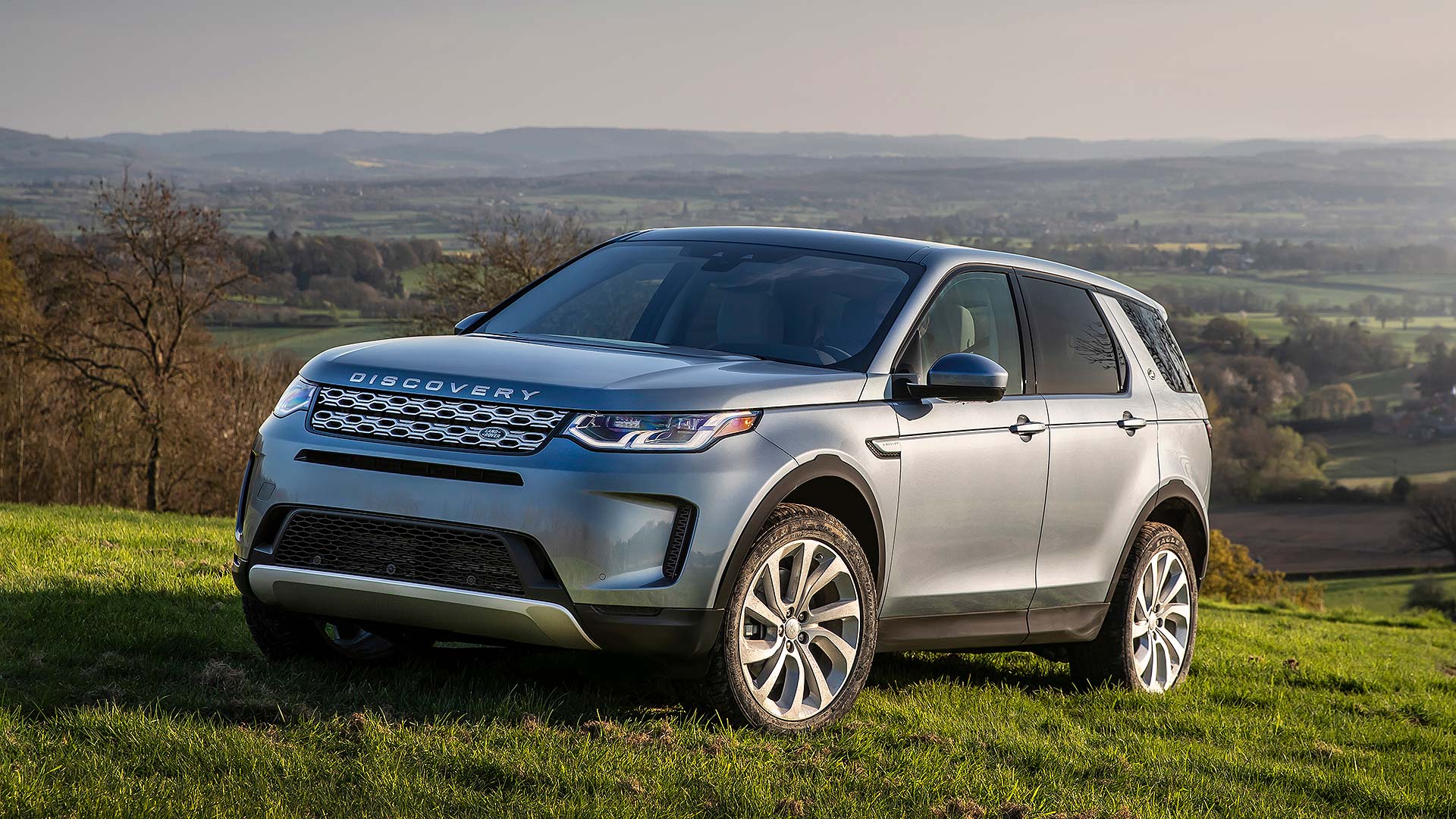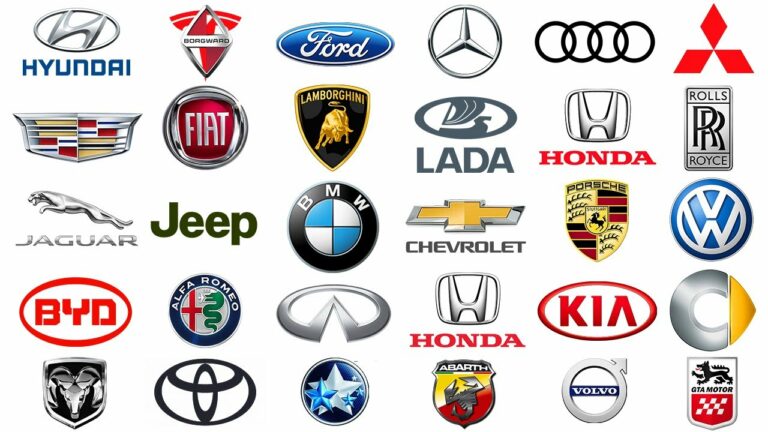Exploring the Legend: A Comprehensive Guide to the Land Rover Discovery
Exploring the Legend: A Comprehensive Guide to the Land Rover Discovery cars.truckstrend.com
Introduction: Unveiling the Iconic Land Rover Discovery
When one hears the name "Discovery" in the automotive world, it doesn’t refer to a standalone car brand, but rather to one of the most celebrated and versatile model lines produced by the esteemed British marque, Land Rover. Part of the Jaguar Land Rover (JLR) family, the Land Rover Discovery stands as a testament to engineering excellence, blending unparalleled off-road capability with luxurious comfort and practical family utility. Since its inception in 1989, the Discovery has carved out a unique niche, bridging the gap between the utilitarian ruggedness of the Defender and the opulent refinement of the Range Rover.
Exploring the Legend: A Comprehensive Guide to the Land Rover Discovery
The Discovery’s relevance lies in its multifaceted appeal. For adventurers, it offers the confidence to tackle the most challenging terrains. For families, it provides spacious, comfortable, and safe transport for up to seven occupants. For those who demand a premium driving experience, it delivers sophistication and cutting-edge technology. This article will delve deep into the essence of the Land Rover Discovery, exploring its rich history, design philosophy, technical prowess, and what makes it a compelling choice for a diverse range of drivers.
The Genesis of Discovery: A Legacy of Innovation
The story of the Land Rover Discovery began in 1989, conceived as a more accessible and family-friendly alternative to the traditional Land Rover offerings. Positioned below the Range Rover, the first-generation Discovery (often retroactively referred to as Discovery 1) aimed to attract a broader market, offering a compelling blend of everyday usability and genuine off-road capability at a more attainable price point. Its distinctive stepped roofline, a design feature retained for several generations, was not merely aesthetic but practical, providing increased headroom for rear passengers, particularly in the third row.
Over the decades, the Discovery has undergone significant transformations, evolving through five distinct generations, each building upon the legacy of its predecessor:
- Discovery 1 (1989-1998): The original trailblazer, known for its robust ladder-frame chassis, permanent four-wheel drive, and iconic design.
- Discovery 2 (1998-2004): An evolution of the original, with subtle design tweaks, improved engines, and enhanced safety features, while retaining the core capabilities.
- Discovery 3 / LR3 (2004-2009): A revolutionary leap, featuring an integrated body-frame structure, independent air suspension, and the groundbreaking Terrain Response system. This generation significantly elevated the Discovery’s on-road manners without compromising its off-road prowess.
- Discovery 4 / LR4 (2009-2016): An extensive refresh of the Discovery 3, bringing more powerful and efficient engines, refined interiors, and updated styling cues, cementing its reputation as a premium SUV.
- Discovery 5 (2017-Present): The current generation marked a radical departure in design, adopting a monocoque chassis (shared with Range Rover and Range Rover Sport) for superior on-road dynamics and lighter weight. While its styling was initially divisive, its capability, comfort, and technological sophistication are undisputed.

This evolution showcases Land Rover’s commitment to continuous improvement, adapting the Discovery to meet changing consumer demands while preserving its core identity as an adventurous, versatile, and capable vehicle.
Key Features and Design Philosophy

The Land Rover Discovery’s design philosophy has always been about combining form with function, albeit with a significant shift in the latest generation.
Traditional Design Cues (Discovery 1-4):
Earlier generations were characterized by their boxy, purposeful aesthetics. The iconic stepped roof provided stadium seating for passengers, offering better visibility and a sense of spaciousness. The asymmetric tailgate, found on the Discovery 1 and 2, was another unique feature, allowing for easier loading. These elements contributed to a rugged, adventurous persona that resonated deeply with off-road enthusiasts and families alike.
Modern Design Language (Discovery 5):
The current Discovery 5 adopted a sleeker, more contemporary design, aligning it more closely with the Range Rover family. While some traditionalists missed the classic boxiness, the new design boasts improved aerodynamics and a more refined, upscale presence. Despite the visual transformation, practicality remains paramount:

- Interior Comfort and Versatility: The Discovery is renowned for its spacious and highly adaptable interior. Most models offer a seven-seat configuration, with the third row capable of accommodating adults for shorter journeys. The "stadium seating" concept, where each subsequent row is slightly higher than the one in front, ensures excellent forward visibility for all passengers.
- Premium Materials and Technology: Inside, the Discovery exudes luxury. High-quality materials, meticulous craftsmanship, and advanced technology create a sophisticated environment. The latest Pivi Pro infotainment system provides intuitive control over navigation, media, and vehicle settings, often featuring large, responsive touchscreens. Connectivity options like Apple CarPlay and Android Auto are standard, alongside multiple charging points and advanced driver assistance systems.
- Clever Storage Solutions: From hidden compartments to versatile cargo space, the Discovery is designed with family life in mind. The ability to fold seats flat creates an expansive load area, perfect for luggage, sports equipment, or even camping gear.
Unrivaled Off-Road Capability: The Heart of Discovery
What truly sets the Land Rover Discovery apart is its legendary off-road capability. This is not just a marketing claim but a fundamental aspect of its engineering and design.
- Terrain Response System: Pioneered in the Discovery 3, Land Rover’s patented Terrain Response system allows the driver to select from various modes (e.g., Grass/Gravel/Snow, Mud & Ruts, Sand, Rock Crawl). The system then automatically optimizes the vehicle’s engine, gearbox, differentials, and suspension settings for maximum traction and control in challenging conditions. The latest versions, Terrain Response 2, can even automatically select the most appropriate mode.
- Air Suspension: Most Discovery models feature an advanced air suspension system that offers adjustable ride height. This allows the vehicle to lower for easy entry/exit or raise significantly for increased ground clearance when tackling obstacles. It also contributes to a remarkably comfortable ride on diverse surfaces.
- Advanced Drivetrain: Equipped with permanent or intelligent all-wheel drive, the Discovery utilizes sophisticated differentials (including optional active locking rear differential) to distribute power efficiently to the wheels with the most grip.
- Wading Capability: A hallmark of Land Rover vehicles, the Discovery boasts impressive wading depths (up to 900mm in the current generation), allowing it to safely navigate water crossings. Sensors can even display the water depth on the infotainment screen.
- Hill Descent Control (HDC) and All-Terrain Progress Control (ATPC): HDC automatically maintains a slow, controlled speed on steep descents, while ATPC acts like a low-speed cruise control for off-road driving, allowing the driver to focus solely on steering.
- Geometry: Excellent approach, departure, and breakover angles, combined with high ground clearance, ensure the Discovery can traverse challenging terrain without scraping its underbody.
Practical Advice: For owners, understanding and utilizing these features is key. Before venturing off-road, familiarize yourself with the Terrain Response modes and practice in a safe environment. Never exceed your comfort level or the vehicle’s capabilities. Regular checks of tire pressure and underbody protection are also crucial for off-road excursions.
On-Road Dynamics and Everyday Usability
While its off-road prowess is legendary, the modern Land Rover Discovery is equally adept on paved roads, offering a refined and comfortable driving experience that belies its size and capability.
- Comfortable Ride Quality: The sophisticated air suspension, particularly in the current Discovery 5, provides an exceptionally smooth and composed ride, soaking up road imperfections with ease. This makes long journeys a pleasure for all occupants.
- Refined Powertrains: The Discovery offers a range of powerful and efficient engines, including Ingenium diesel and petrol options, often featuring mild-hybrid (MHEV) technology for improved fuel economy and reduced emissions. These engines deliver ample power for confident overtaking and effortless cruising.
- Towing Capacity: With a class-leading towing capacity (often up to 3,500 kg or 7,716 lbs), the Discovery is a favorite among those who need to tow caravans, boats, or horse trailers. Advanced towing aids like Trailer Stability Assist further enhance safety and ease of use.
- Driver Assistance Features: The Discovery is packed with modern safety and driver assistance technologies, including adaptive cruise control, lane-keeping assist, blind-spot monitoring, emergency braking, and various parking aids, making urban driving and highway cruising safer and less stressful.
- Maneuverability: Despite its size, the Discovery is surprisingly maneuverable, thanks to a relatively tight turning circle and excellent visibility, aided by cameras and sensors.
Models and Trims: Tailoring Your Discovery Experience
The Land Rover Discovery is available in various trim levels, allowing buyers to tailor their vehicle to their specific needs, preferences, and budget. While exact trims and engine options can vary by market and model year, here’s a general overview of the current Discovery 5 generation:
- Discovery S: The entry-level trim, yet still well-equipped with essential features like LED headlights, Pivi Pro infotainment, and standard seven-seat configuration.
- Discovery SE: Builds on the S trim with enhanced features such as larger alloy wheels, premium LED headlights, an upgraded sound system, and more advanced driver assistance technologies.
- Discovery HSE: A step up in luxury, adding features like Windsor leather upholstery, a Meridian sound system, a panoramic sunroof, heated and cooled seats, and a more comprehensive suite of driver aids.
- Discovery R-Dynamic: Available across S, SE, and HSE levels, the R-Dynamic adds sportier exterior styling cues (darkened accents, unique bumpers) and interior finishes, for those seeking a more dynamic aesthetic.
- Discovery Metropolitan Edition: Often positioned as a top-tier special edition, offering unique design elements, advanced features as standard, and a highly luxurious interior.
Engine Options (Examples for current gen):
- P300: A 2.0-liter turbocharged four-cylinder petrol engine (approx. 300 horsepower).
- P360: A 3.0-liter turbocharged inline-six petrol engine with MHEV technology (approx. 360 horsepower).
- D250/D300: 3.0-liter turbocharged inline-six diesel engines with MHEV technology (approx. 250/300 horsepower, respectively).
How to Choose:
Consider your primary use case:
- Family Hauler: Any trim level will offer the necessary space and seating, but higher trims add comfort and convenience.
- Off-Road Enthusiast: All Discos are capable, but ensure you select models with features like air suspension and optional locking differentials if extreme off-roading is planned.
- Luxury & Tech: HSE or Metropolitan editions offer the most premium experience and advanced features.
- Budget: Starting prices vary significantly between trims and engine options.
Important Considerations Before Owning a Discovery
Owning a Land Rover Discovery comes with a unique set of advantages and considerations:
Pros:
- Unmatched Versatility: Excels as a family SUV, luxury cruiser, and highly capable off-roader.
- Spacious and Practical: Genuine seven-seater with flexible interior configurations and ample cargo space.
- Premium Comfort and Refinement: High-quality interior, comfortable ride, and sophisticated technology.
- Strong Towing Capability: Ideal for those who need to tow heavy loads.
- Iconic Heritage and Strong Resale Value: Benefits from Land Rover’s prestigious brand image.
Cons:
- Purchase Price: As a premium vehicle, the initial cost can be substantial, especially for higher trims and optional extras.
- Running Costs: Fuel economy, while improved with MHEV engines, can still be higher than smaller SUVs. Maintenance and servicing, as with any luxury vehicle, can be more expensive.
- Size: Its large footprint can make parking and maneuvering in tight urban spaces challenging.
- Reliability Perception: Historically, Land Rover has faced mixed perceptions regarding reliability. While modern vehicles have improved, it’s crucial to follow maintenance schedules diligently and factor in potential repair costs.
- Insurance Costs: Premium vehicles often command higher insurance premiums.
Practical Advice: Research extended warranty options. Find a reputable Land Rover specialist for servicing, which might be more cost-effective than main dealerships for out-of-warranty work. Factor in the total cost of ownership, not just the purchase price.
Tips for Discovery Owners and Enthusiasts
- Regular Maintenance is Key: Adhere strictly to Land Rover’s recommended service schedule. This is crucial for maintaining the vehicle’s performance, reliability, and resale value.
- Utilize Off-Road Features Safely: If you plan to go off-road, take a proper off-road driving course. Understand how to use Terrain Response, air suspension, and other systems effectively and safely.
- Join Owner Communities: Online forums and local clubs for Land Rover Discovery owners are invaluable resources for advice, tips, and shared experiences.
- Accessorize Smartly: Land Rover offers a range of genuine accessories, from roof racks and bike carriers to robust recovery gear, that can enhance your Discovery’s versatility and adventure readiness.
- Protect Your Investment: Consider paint protection film, regular detailing, and careful driving to maintain the vehicle’s condition and maximize its resale value.
Pricing Information: Land Rover Discovery (Approximate Starting MSRPs)
Please note that prices are approximate Manufacturer’s Suggested Retail Prices (MSRPs) for the US market and can vary significantly based on region, dealership, optional extras, current promotions, and market conditions. Always consult an authorized Land Rover dealer for the most accurate and up-to-date pricing.
| Model/Trim | Engine Type (Approx. HP) | Starting Price (Approx. USD) | Key Features (Highlights) |
|---|---|---|---|
| Discovery S | P300 (300hp Petrol MHEV) | $59,900 | 7-seats, Pivi Pro, LED Headlights, Coil Suspension (Air optional) |
| Discovery S | D300 (300hp Diesel MHEV) | $62,900 | (Similar to P300 S) |
| Discovery SE | P300 (300hp Petrol MHEV) | $64,900 | Upgraded Infotainment, Premium LED Headlights, Larger Wheels |
| Discovery SE | D300 (300hp Diesel MHEV) | $67,900 | (Similar to P300 SE) |
| Discovery HSE | P300 (300hp Petrol MHEV) | $70,900 | Windsor Leather, Meridian Sound System, Panoramic Roof, Advanced Driver Aids |
| Discovery HSE | D300 (300hp Diesel MHEV) | $73,900 | (Similar to P300 HSE) |
| Discovery R-Dynamic S | P300 (300hp Petrol MHEV) | $62,900 | Sportier Exterior Accents, Unique Interior Trim |
| Discovery R-Dynamic HSE | D300 (300hp Diesel MHEV) | $75,900 | Top-tier R-Dynamic with full HSE features |
| Discovery Metropolitan Edition | P360 (360hp Petrol MHEV) | $78,900+ | Flagship Trim, Unique Design Elements, Advanced Features as Standard |
Prices are subject to change and do not include destination charges, taxes, title, license fees, or optional equipment.
Frequently Asked Questions (FAQ) about the Land Rover Discovery
Q1: Is Discovery a separate car brand?
A1: No, "Discovery" is not a standalone car brand. It is a highly successful and iconic model line produced by Land Rover, which is part of the Jaguar Land Rover (JLR) automotive group.
Q2: How many seats does a Land Rover Discovery typically have?
A2: Most Land Rover Discovery models are designed to seat seven passengers, featuring a 2+3+2 seating configuration. The third row can usually be folded flat to maximize cargo space.
Q3: Is the Land Rover Discovery good off-road?
A3: Absolutely. The Land Rover Discovery is renowned for its exceptional off-road capabilities. Equipped with features like the Terrain Response system, adjustable air suspension, and advanced four-wheel-drive systems, it can confidently tackle a wide range of challenging terrains.
Q4: What’s the difference between the Land Rover Discovery and the Discovery Sport?
A4: The Land Rover Discovery is a larger, more premium, and more capable SUV, typically offering seven seats and greater off-road prowess. The Discovery Sport is a smaller, more compact SUV, usually offering 5+2 seating (smaller third row) and designed for a balance of urban practicality and light off-road capability. They are built on different platforms.
Q5: Is the Land Rover Discovery reliable?
A5: Land Rover, as a brand, has had a mixed reputation for reliability in the past. However, modern Land Rover vehicles, including the Discovery, have seen significant improvements in quality and reliability. Like any complex premium vehicle, consistent and proper maintenance is crucial for long-term reliability.
Q6: What are the main competitors of the Land Rover Discovery?
A6: The Land Rover Discovery competes with other premium large SUVs such as the Volvo XC90, Audi Q7, BMW X5, Mercedes-Benz GLE, Acura MDX, and sometimes even the Toyota Land Cruiser (depending on market and focus).
Q7: What is the towing capacity of the Land Rover Discovery?
A7: The Land Rover Discovery boasts an impressive towing capacity, often rated up to 3,500 kg (7,716 lbs) for properly equipped models, making it one of the best choices in its class for towing heavy loads. Specific capacity can vary by engine and market.
Q8: Does the Discovery offer hybrid or electric options?
A8: The current generation Land Rover Discovery offers mild-hybrid (MHEV) technology on its Ingenium petrol and diesel engines, which improves fuel efficiency and reduces emissions. As of now, a full plug-in hybrid (PHEV) or all-electric version is not available, but Land Rover is committed to electrifying its entire lineup in the future.
Conclusion: The Enduring Appeal of the Land Rover Discovery
The Land Rover Discovery is far more than just another SUV; it is a true automotive icon that embodies the spirit of adventure, luxury, and versatility. While not a "car brand" in itself, its distinct identity within the Land Rover lineage has allowed it to cultivate a loyal following across the globe. From its humble beginnings as a family-friendly adventurer to its current status as a sophisticated, technology-laden premium SUV, the Discovery has consistently delivered a unique blend of rugged capability and refined comfort.
Its ability to seamlessly transition from tackling extreme off-road trails to providing a luxurious and spacious environment for daily commutes and long family trips is what truly sets it apart. The Land Rover Discovery remains a compelling choice for those who demand uncompromising performance, practicality, and prestige, cementing its place as a legend in the world of capable and luxurious vehicles. It’s a testament to Land Rover’s vision: a vehicle that enables discovery, both of new horizons and of what’s truly possible on four wheels.




